Inside: Discover how to use an inquiry-based approach to teach your traditional preschool, kindergarten, or first grade plant unit.
The Plant Unit Kit Arrives
Every April, the kindergarten plant kit arrives from our science department. Our plant unit includes traditional lessons, but I wanted to use a more inquiry-based approach, so here’s what I tried.
I began by placing the plant kit in the center of the carpet and gathering children around it. “Look what came today,” I said. “I wonder what is inside?”

The children made predictions. Some of their guesses included:
school supplies
rocks
science materials
plants (this child read the label)
lip “glosses” (LOL!)
Unpacking the Plant Unit
Next, I opened the box, took out each object, and asked, “What is this called?” for each item inside.

Once all the items were revealed and named, I asked, “How do these objects go together? What do you think we are supposed to do with them?” Each of their responses had something to do with making a garden or planting seeds.
I then asked if the box included everything we would need to “make plants,” and we made a list of what plants needed. They came up with dirt, seeds, soil, water, sun, and heat. When we listed dirt AND soil, I asked if they were the same. Most children said, “yes,” so I took note that this might be a good question to research.
There was also some discussion of how plants get sun that included talk of where we should put the plants – indoors or outdoors. I noted that this might be an experiment we could do to further explore the best growing conditions.
So in that first exploration, we did some predicting, vocabulary development, classifying and listing. I was able to determine what they already knew about what plants needed to grow and to identify 2 questions for research and experimentation. We were off and running!
Making a Garden
Even though the children had shown me that they knew what seeds needed to grow, we needed to define the planting process and sequence the steps into a logical order.
This was a good opportunity to integrate our plant unit with procedural writing. Since this writing was unfamiliar to kids, we co-created a “How to Plant Seeds” book together.

Our plant kit included a variety of seeds, so the children were able to choose what they wanted to plant.

Once they chose their seeds, we followed the steps in our how-to books to plant our seeds.
Growing Responsibility
Once the seeds were planted, I asked, “Who will help me take care of these seeds?” Luckily, their response wasn’t, “Not I!” This began a conversation about whose job it would be to take care of the plants.
We talked about what it meant to be responsible (one of our social studies key concepts) and what that looked like when caring for a plant.
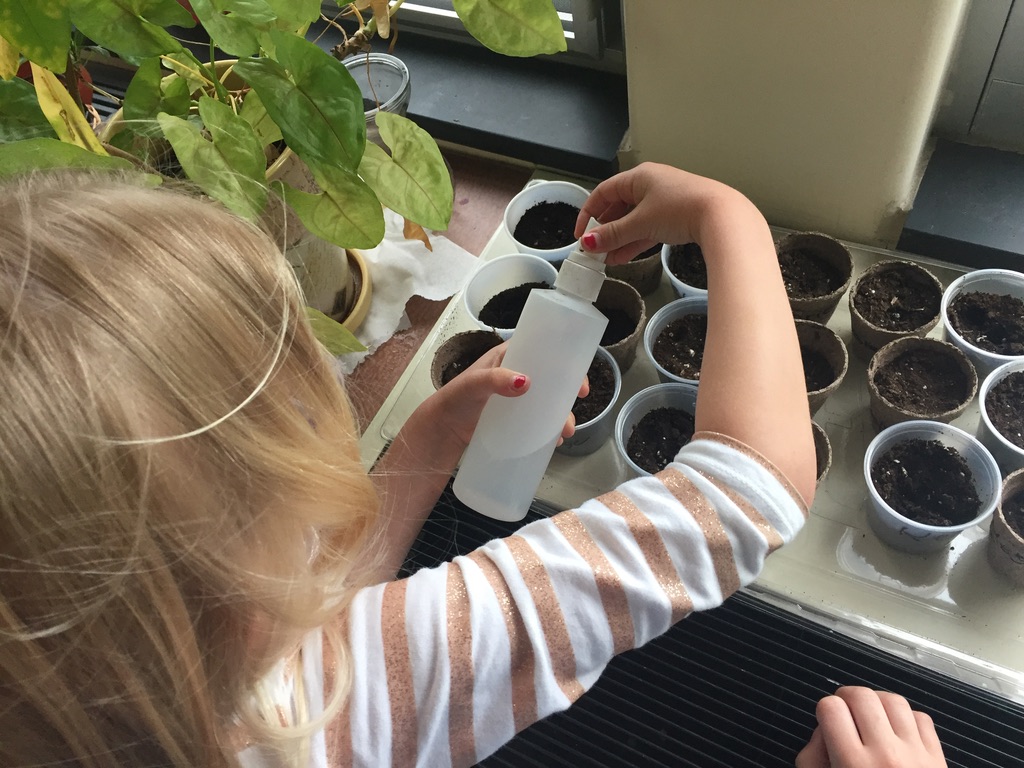
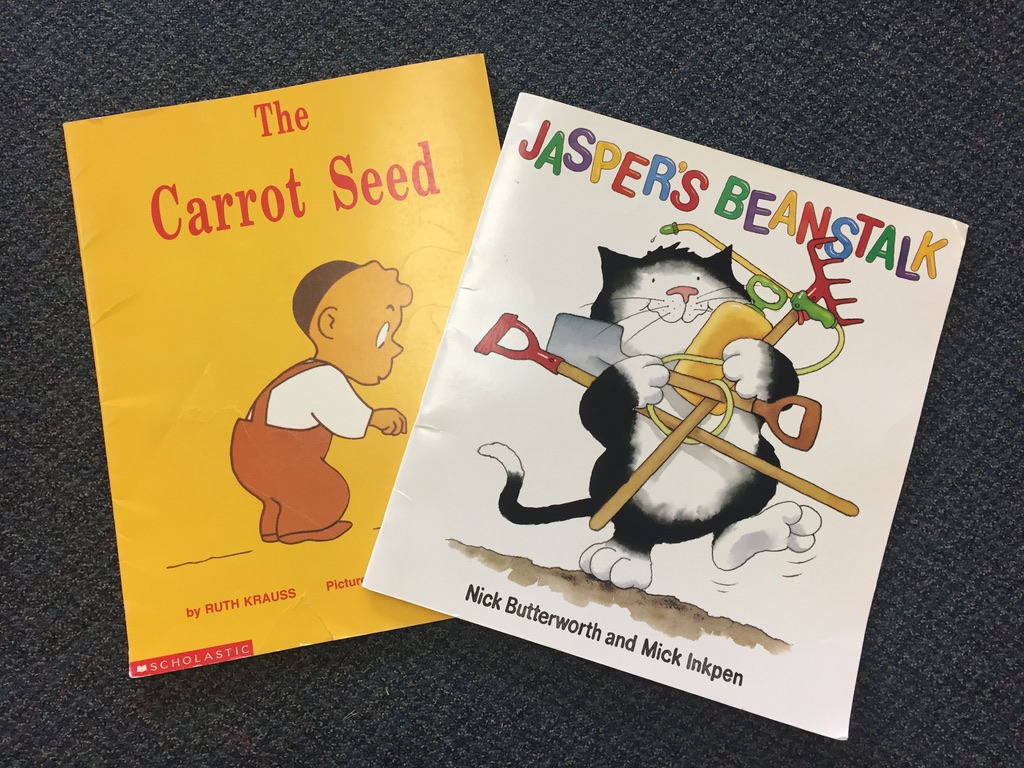
Growing Scientists: The Inside vs. Outside Experiment
While we waited for sprouts to appear, we grew our thinking around plants by doing a little experiment around ideas that came up in our initial exploration.
This experiment was designed to answer the question, “Do seeds grow better inside or outside?” To find the answer, we used identical seeds, amounts of soil, and pots, and placed one inside and the other outside.
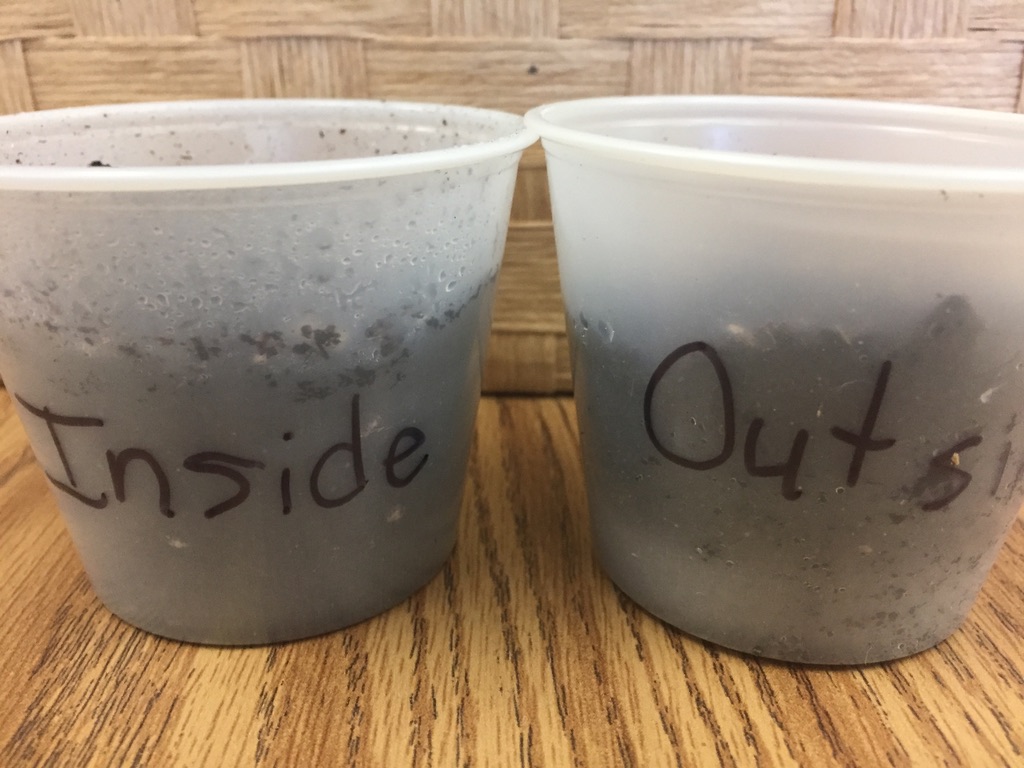
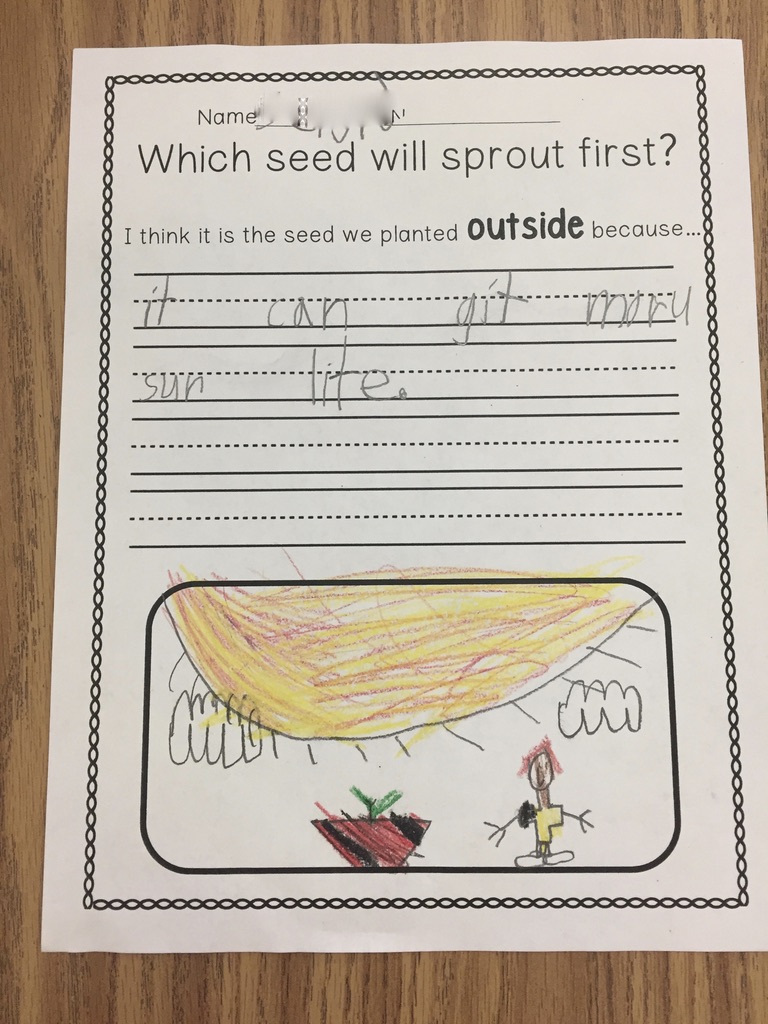
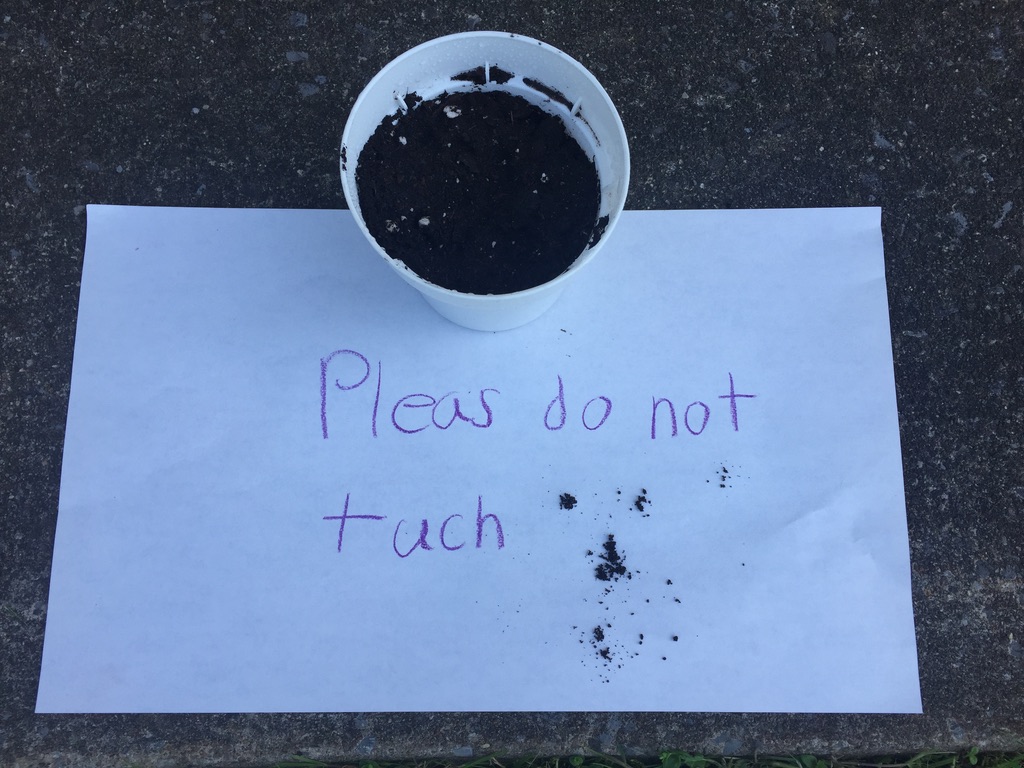

The inside plant didn’t sprout at all, while the outside plant was thriving. We reviewed what was the same about these two plants (the pots, the seeds, the soil) and what was different (the amount of sun and water). The children wondered why some of them were able to grow a plant inside, while this one did not sprout at all.
We read The Empty Pot by Demi and the children realized that not all seeds were exactly the same and there might be some seeds that just would not sprout.
Growing Researchers: Dirt Vs. Soil
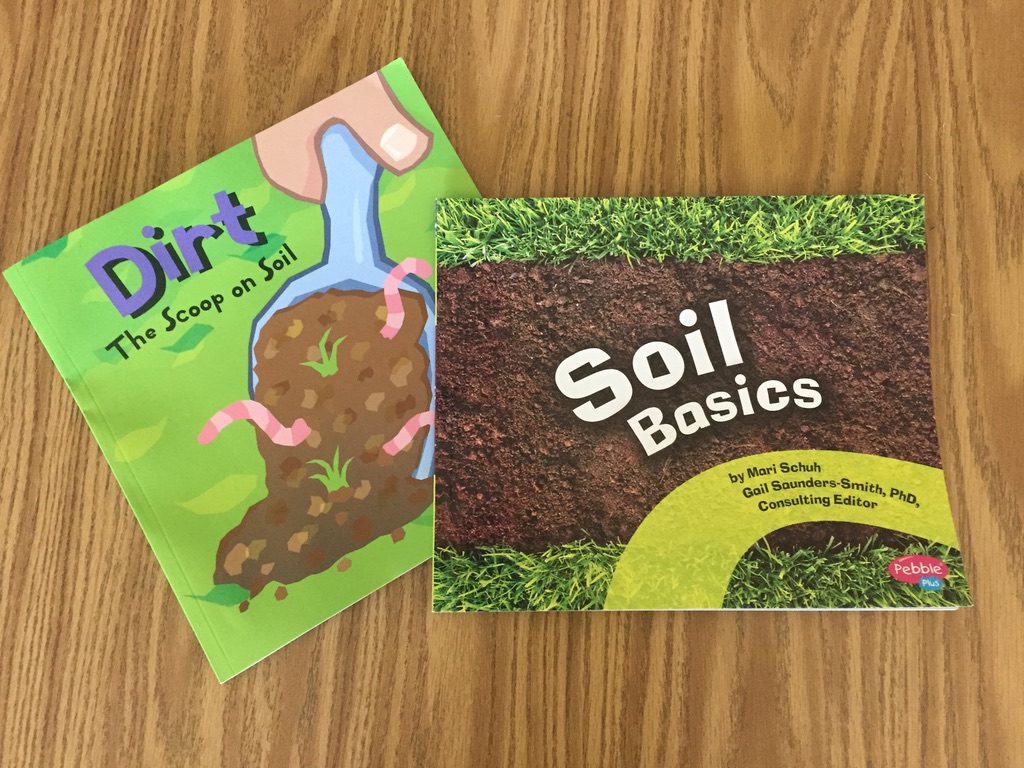
![]()
![]()

They described it as cold, tickly, soft, smooth, squishy, dark, black, and brown. They also discovered grass, leaves, sticks, roots, and “white stuff,” in the mix.
How Does Our Garden Grow?
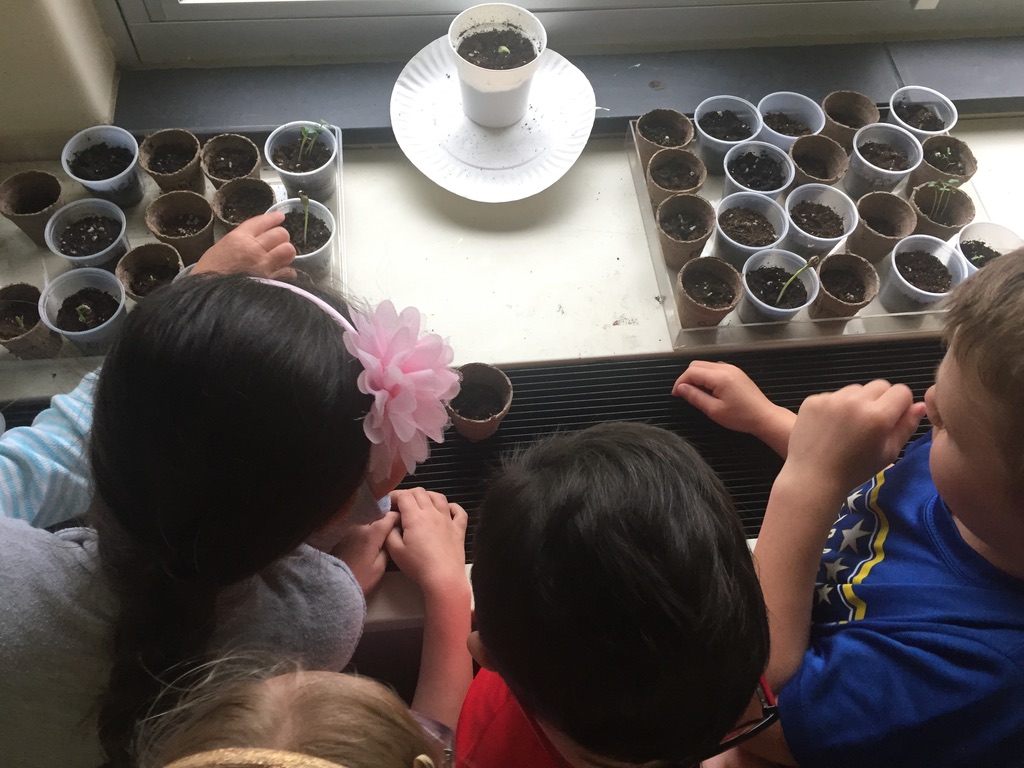
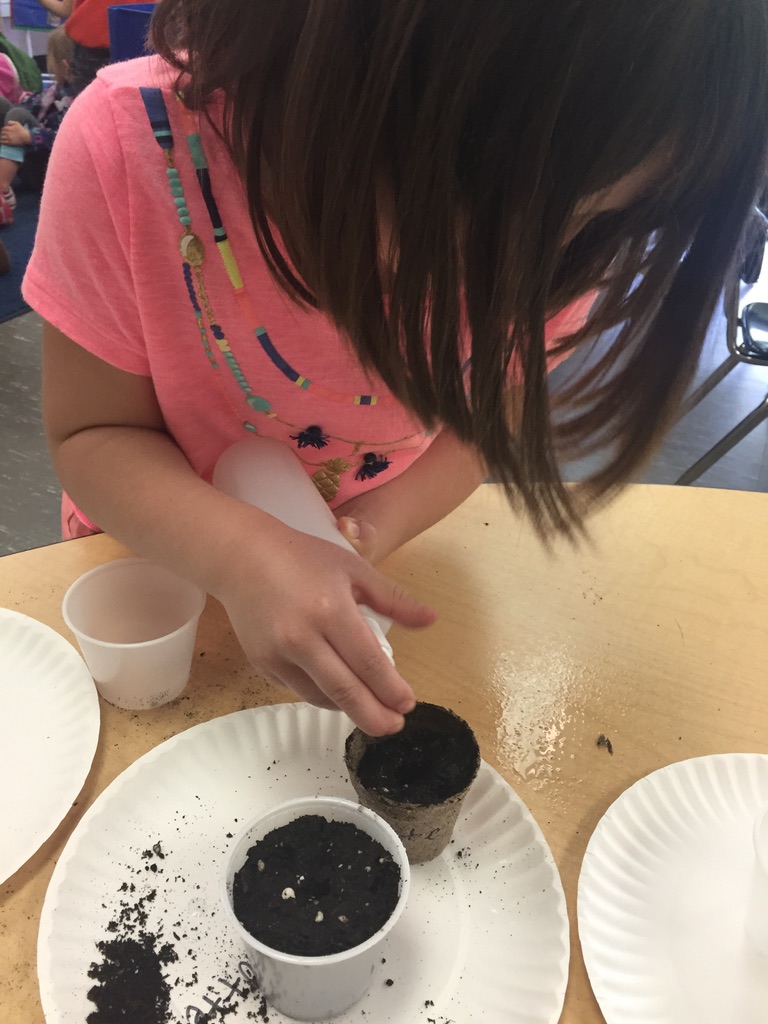
The children were very engaged in caring for their plants right up until our last days of school. It was messy with dirt spills and overcrowding and stuff other than plants being sprayed, but they were learning about taking turns, patience, and caring for living things.
With one day left of school, a little girl said, “I didn’t get a plant.” I asked her why she thought that was and she said, “I overflowed it.” She was taking personal responsibility for this. She was learning through failure. We talked about what she might do differently next time and I sent her home with a packed of seeds.
I must confess that there have been many years where the children planted seeds and I took care of them. Where was the learning in that? I realize now all that they had missed. When using a plant unit, I taught “about” plants through read alouds, worksheets, and booklets, rather than allowing experience to be our teacher.
Plant Unit vs. Inquiry Reflections
Teaching through inquiry vs. a traditional plant unit brought about richer learning opportunities. This approach felt simpler, more authentic, and responsive to what children understood and misunderstood about plants.
Opportunities for research and experimentation unfolded naturally from children’s thoughts, ideas, and misconceptions. It allowed us to go deeper into the content than the traditional lessons as many children had experiences with plant basics in preschool. Also, learning about plants didn’t just happen from 2:30-3:00 during a science block. Noticings and wonderings happened throughout the day as is the way with project work.
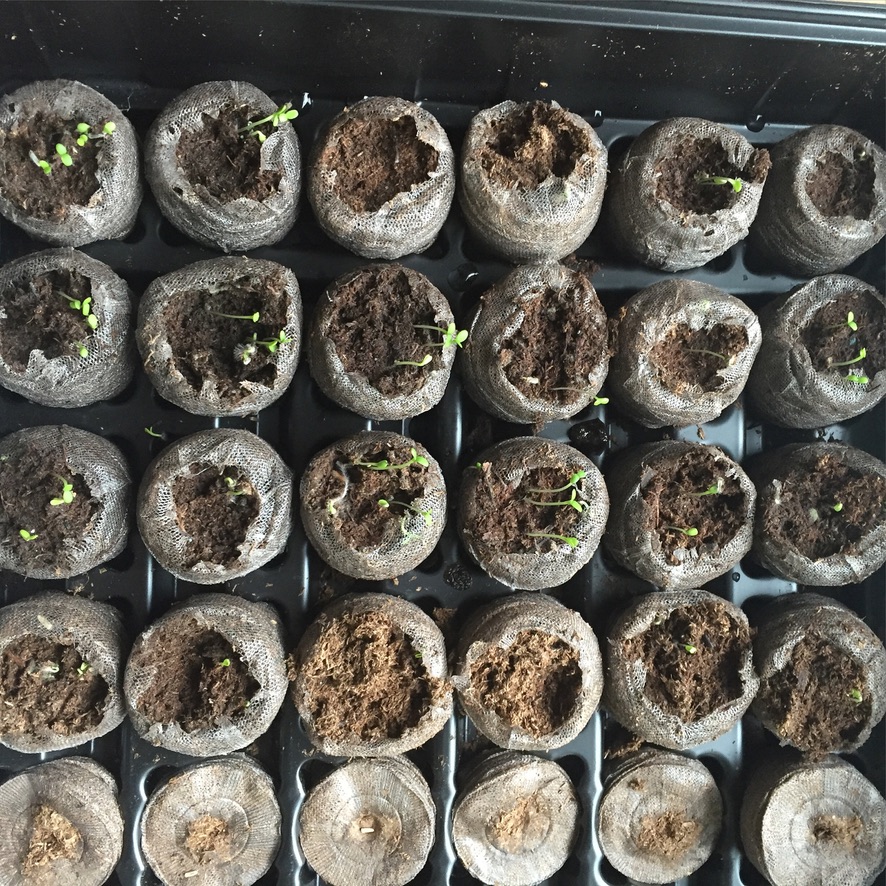
If there is anything I would change about this project, it might be to start a little earlier to give us more growing time (the kit arrived in April, but we didn’t begin planting until May). We could easily begin in March and continue learning about plants throughout the spring. I would also eliminate a few of the seed choices, as some brought better learning opportunities than others (beans vs. grass) and a bigger WOW factor in the children’s eyes.
If you are wanting to try an inquiry-based approach, a plant unit might be a good place to start. Here are a few more resources that might help you as you give children experiences with plants.
How to Writing: How to Grow a Sunflower
Are Trees Alive? A Mini-Inquiry
Our Mystery Bulb: A Plant Inquiry
Planting Bean Seeds to Welcome Spring
For more science and inquiry ideas, check out the Growing with STEAM page inside the Roots & Wings Resource Library.


 25 Ideas, Resources, and Projects for Learning Together in April
25 Ideas, Resources, and Projects for Learning Together in April Curious Classroom Book Study: Check Our News Feed
Curious Classroom Book Study: Check Our News Feed 3 Types of Makerspace Challenges to Use Across the Kindergarten Year
3 Types of Makerspace Challenges to Use Across the Kindergarten Year Kindergarten Poetry: Teaching with Choice and Voice
Kindergarten Poetry: Teaching with Choice and Voice
Wow – the learning that has taken place here is amazing. The change in your methods is inspiring! I learned a lot from this post. Thanks for sharing your experiences in such depth!